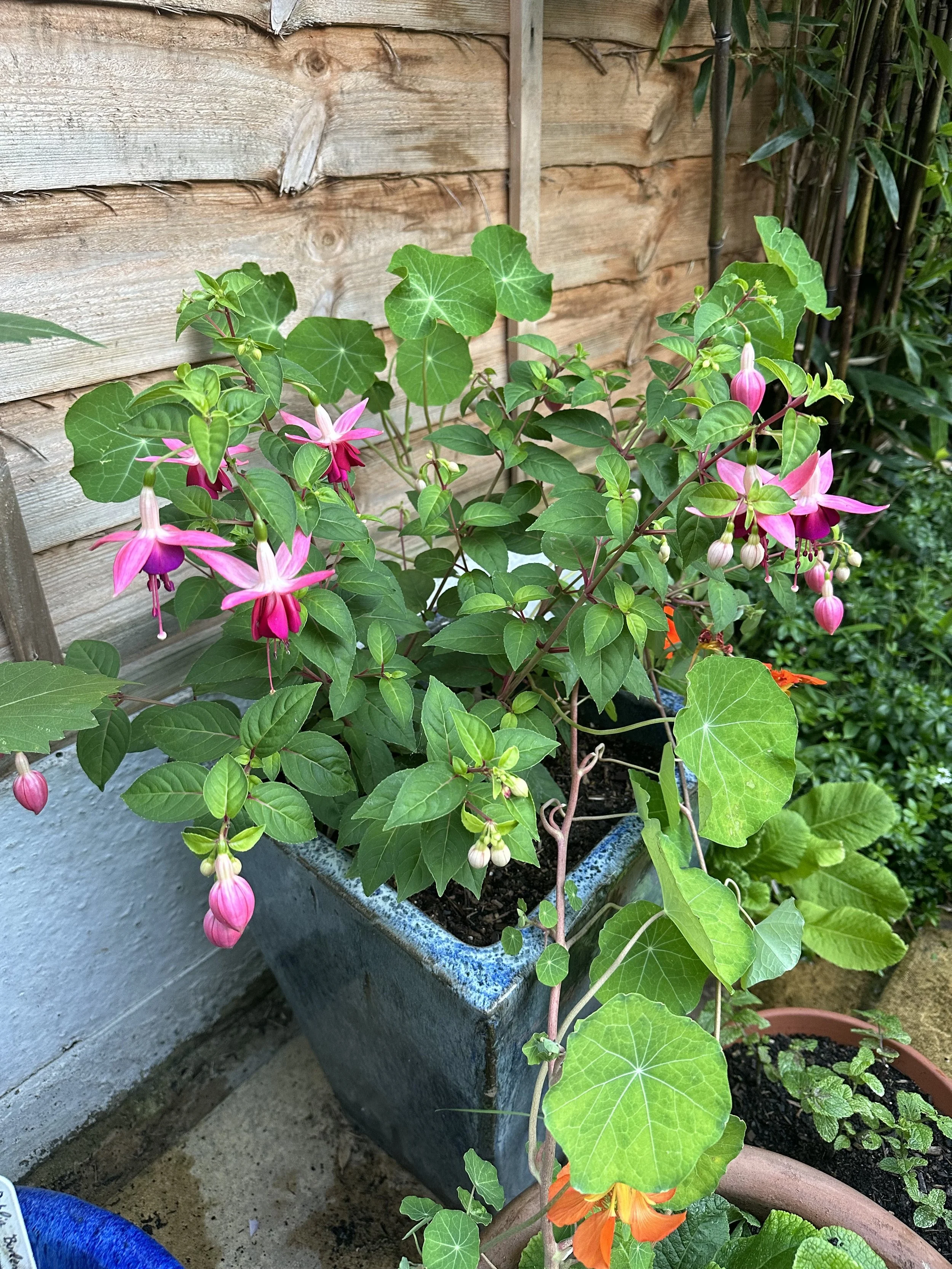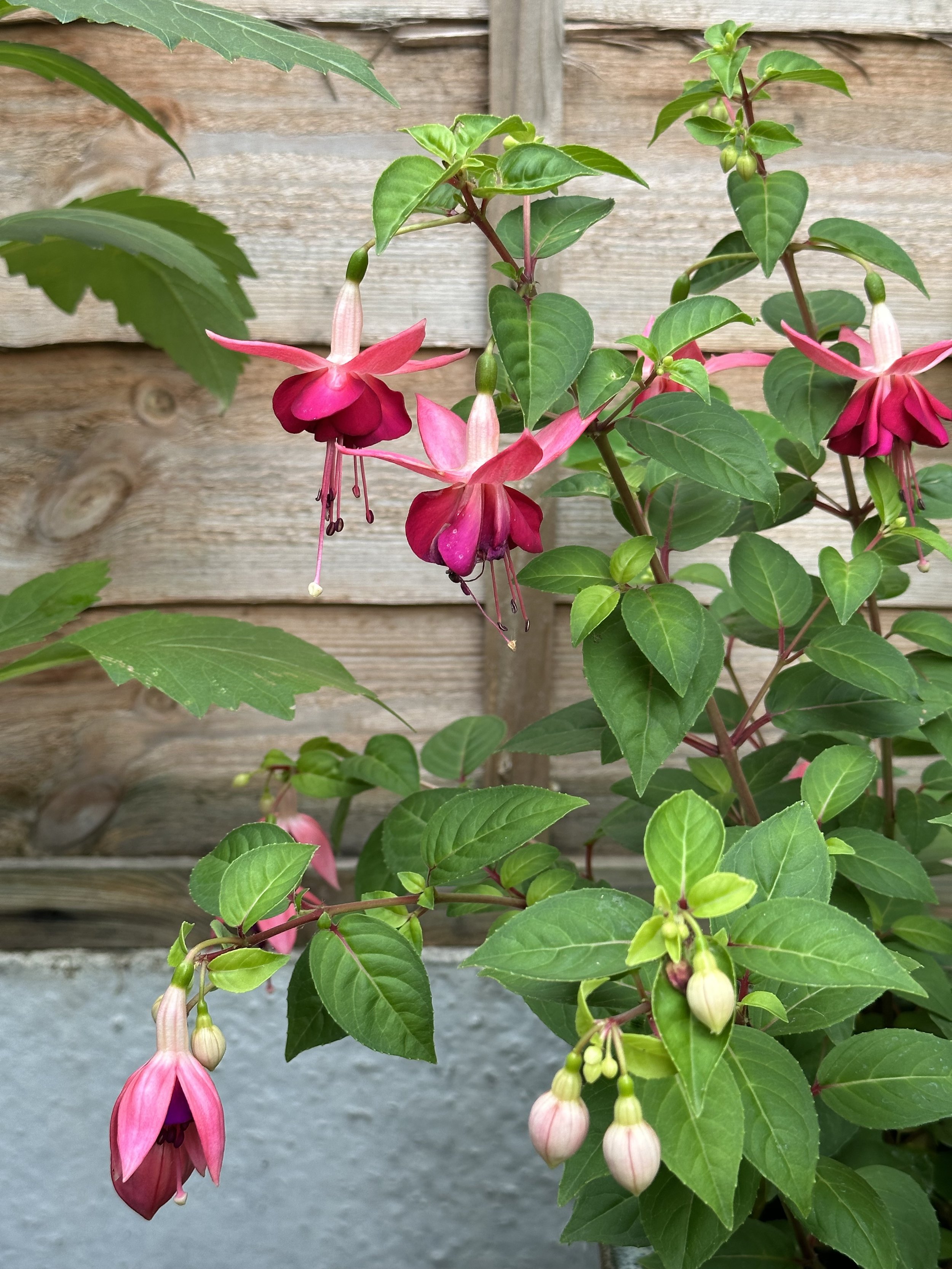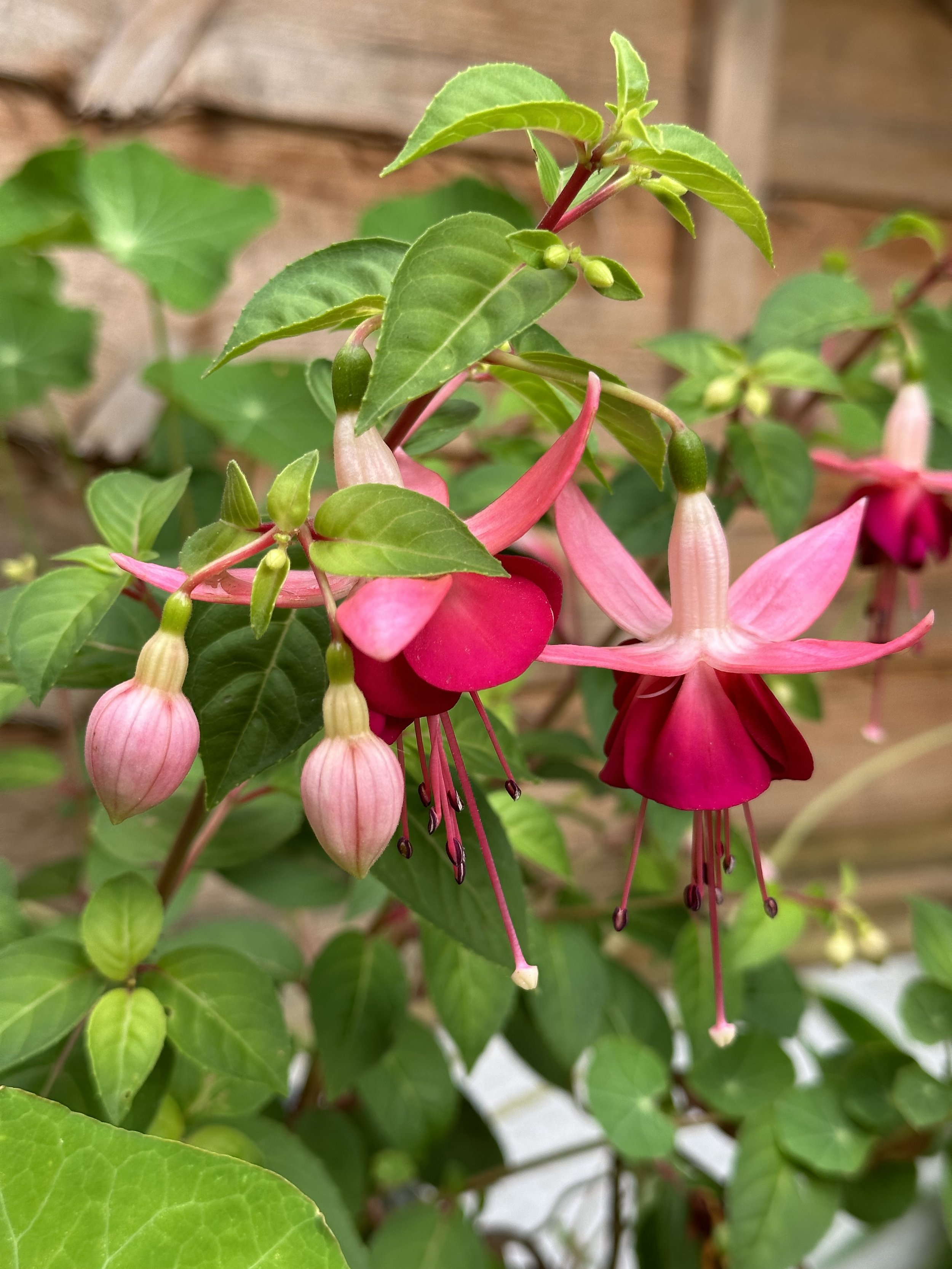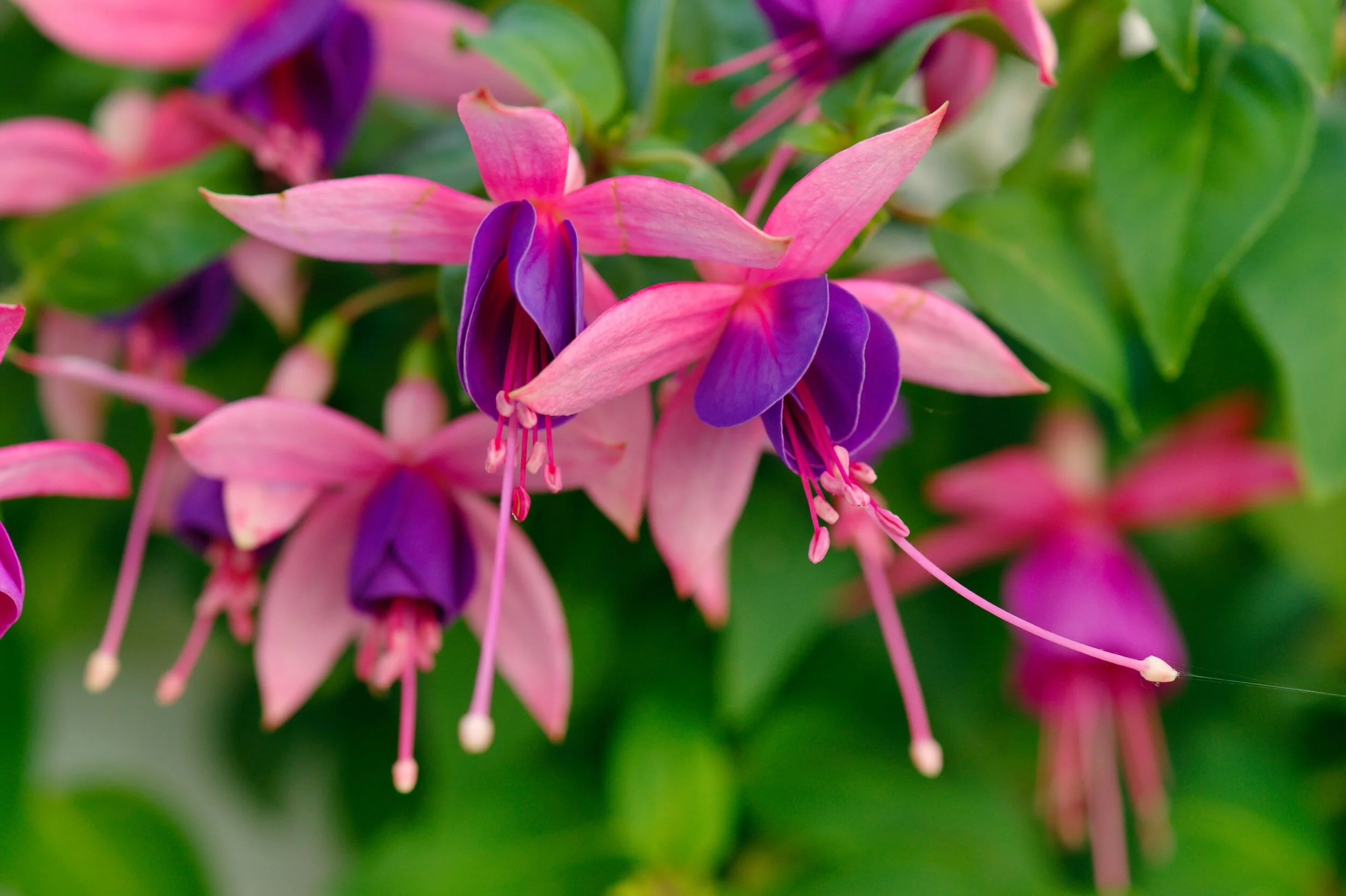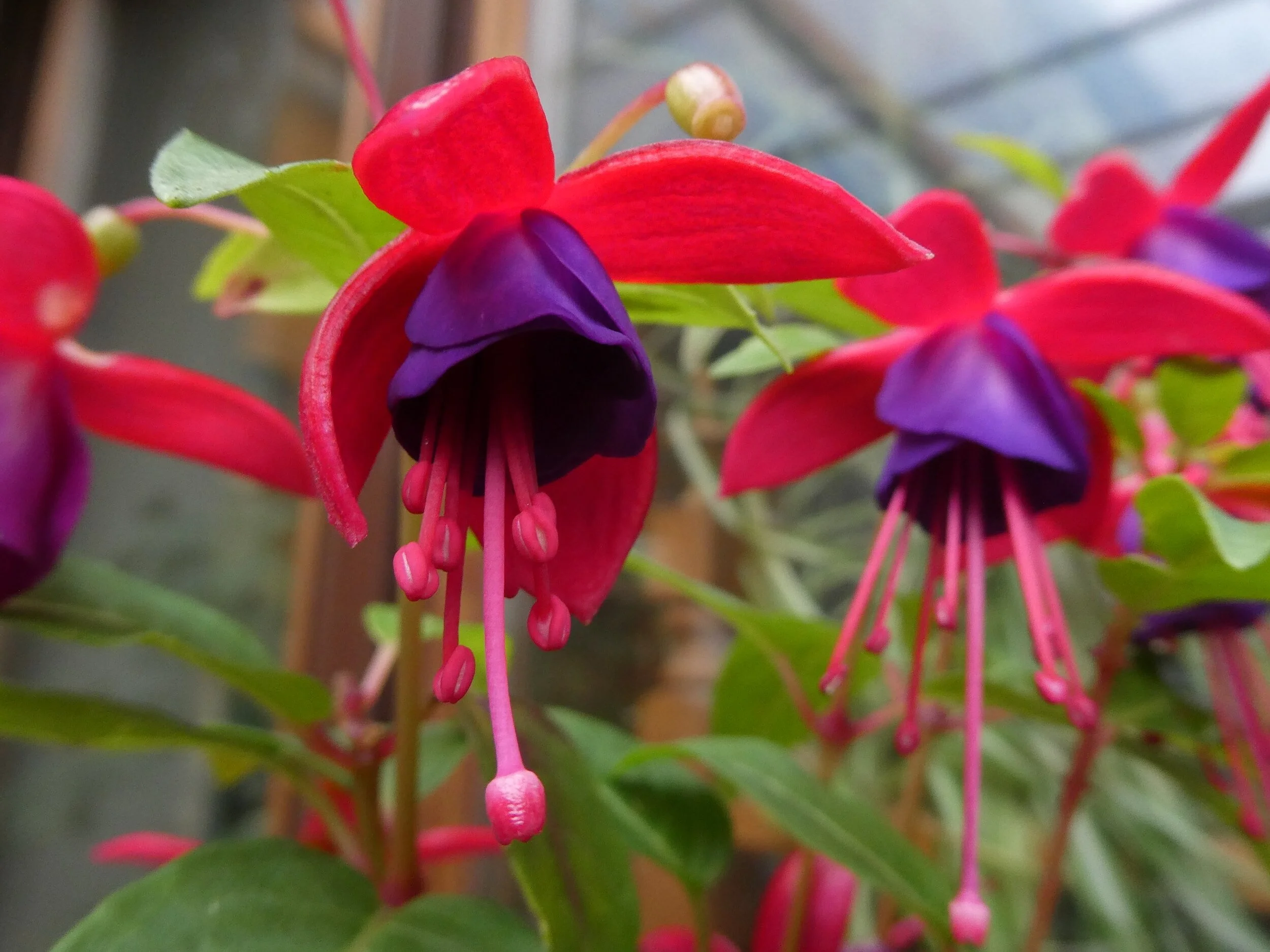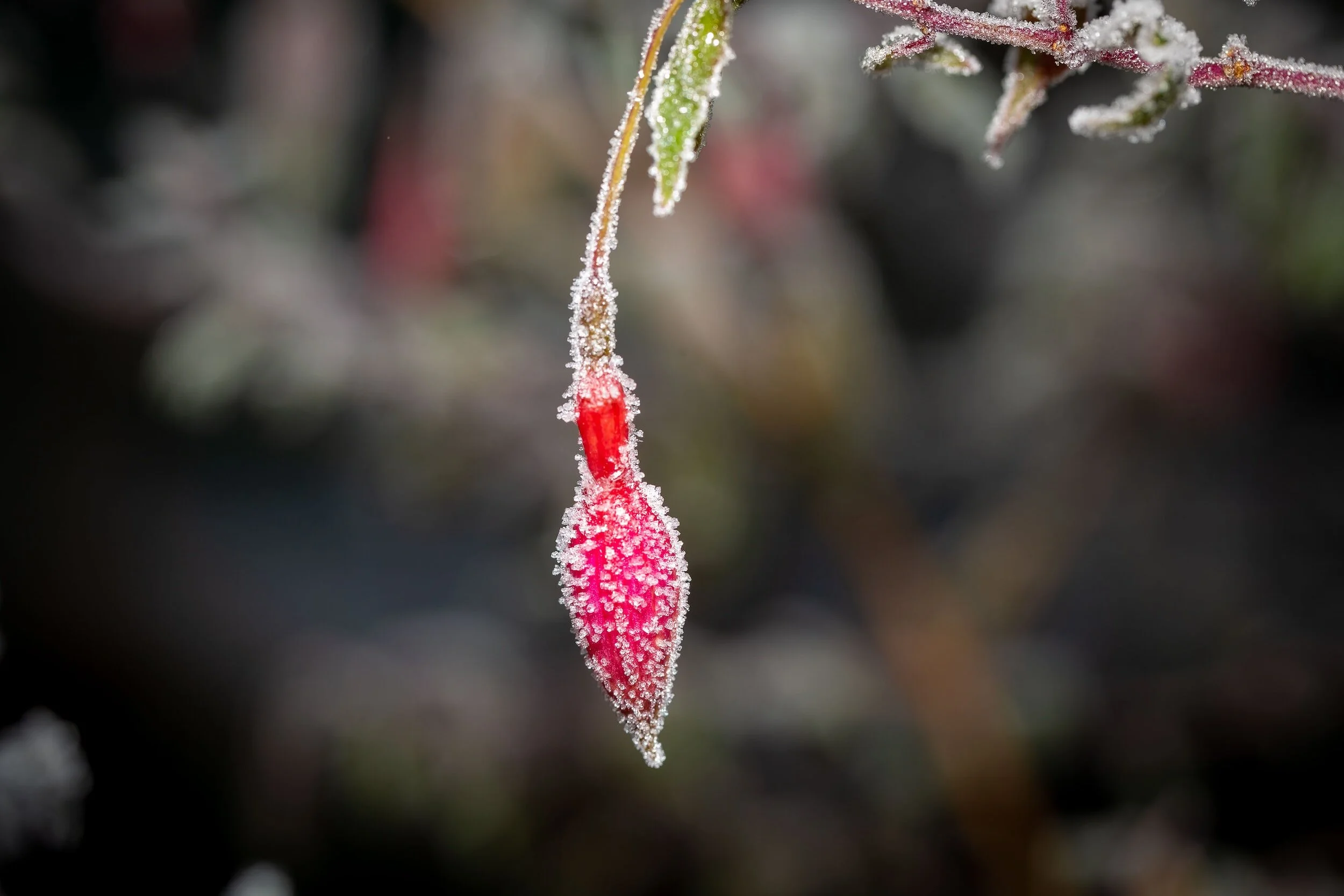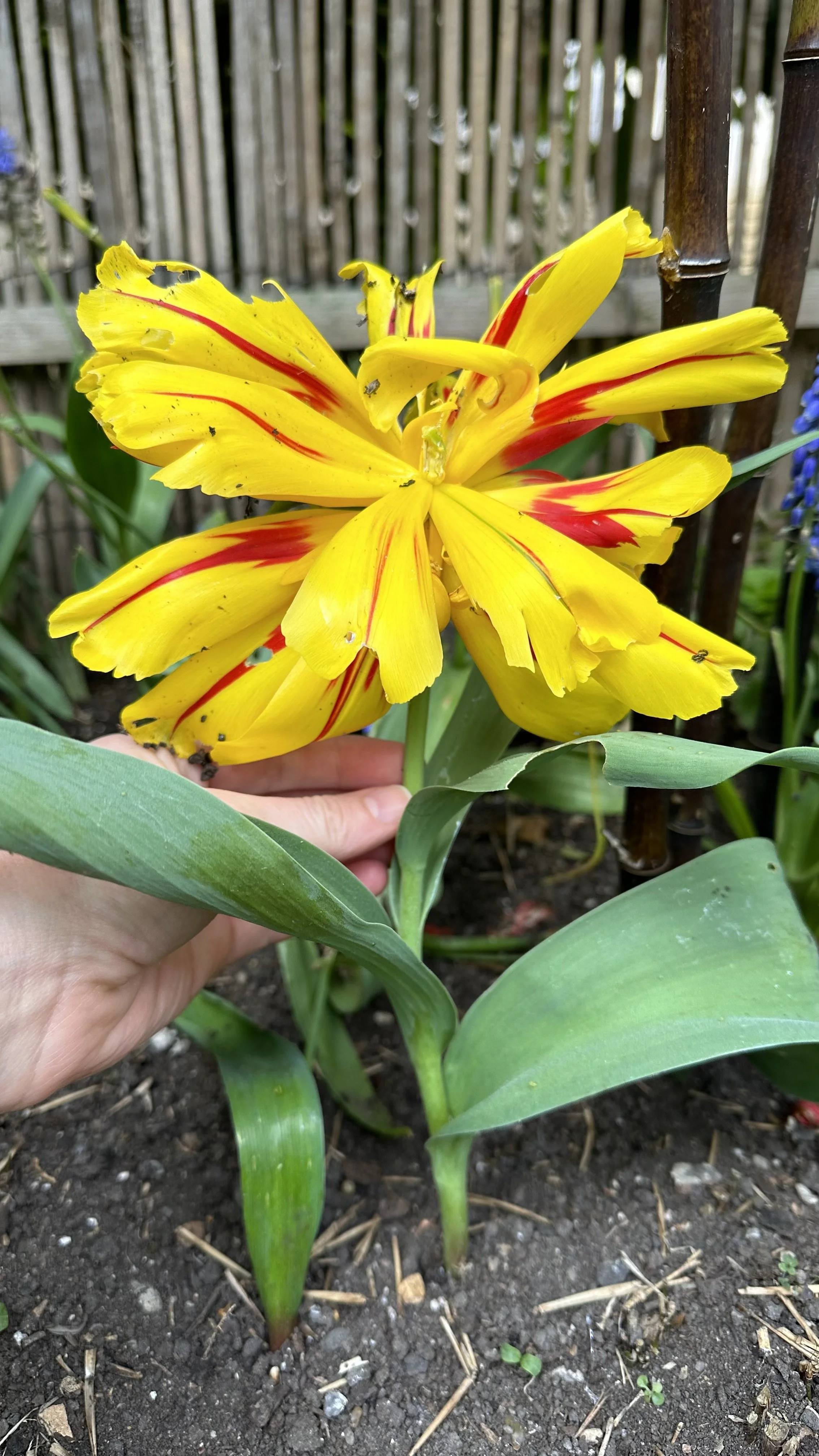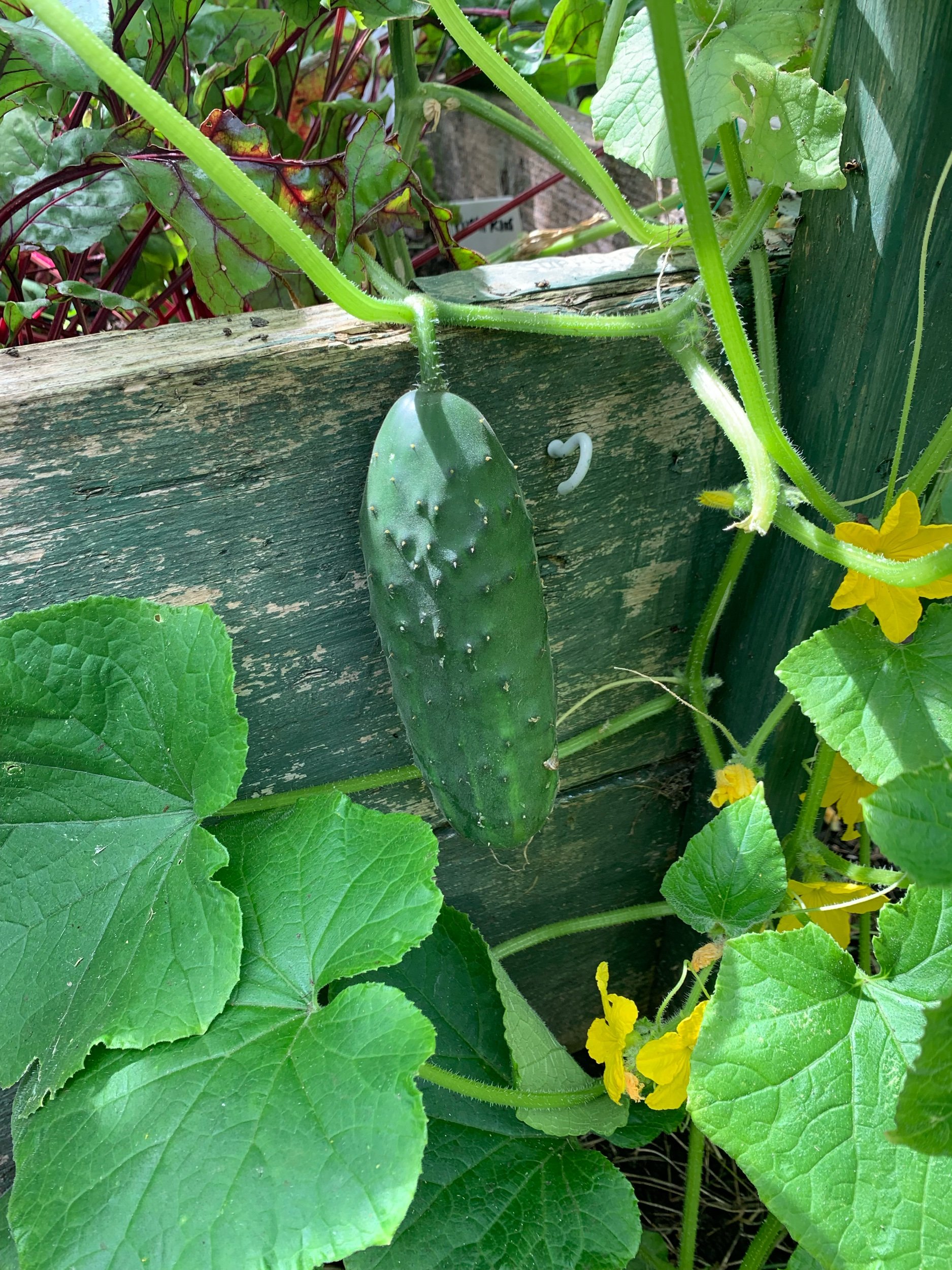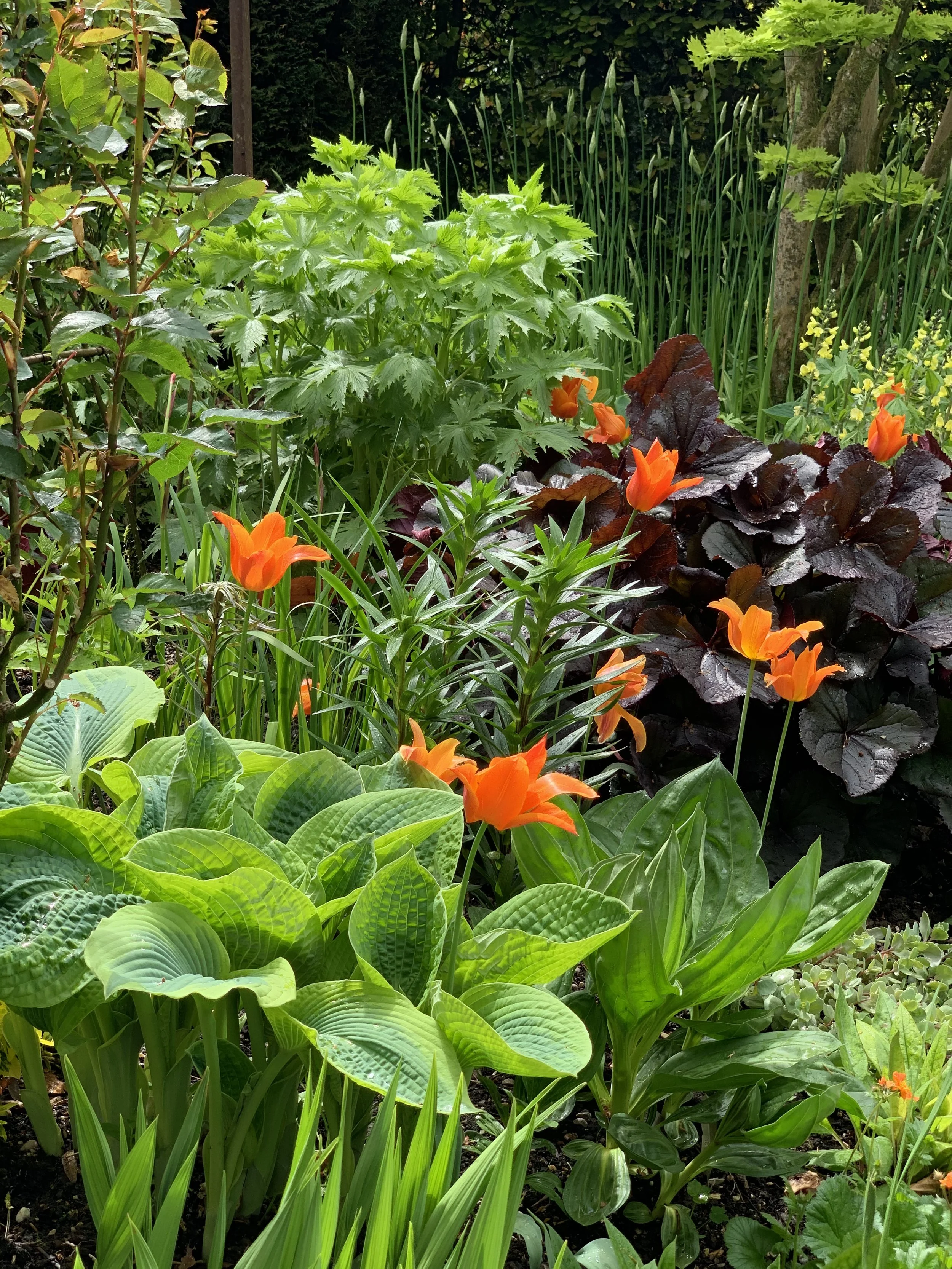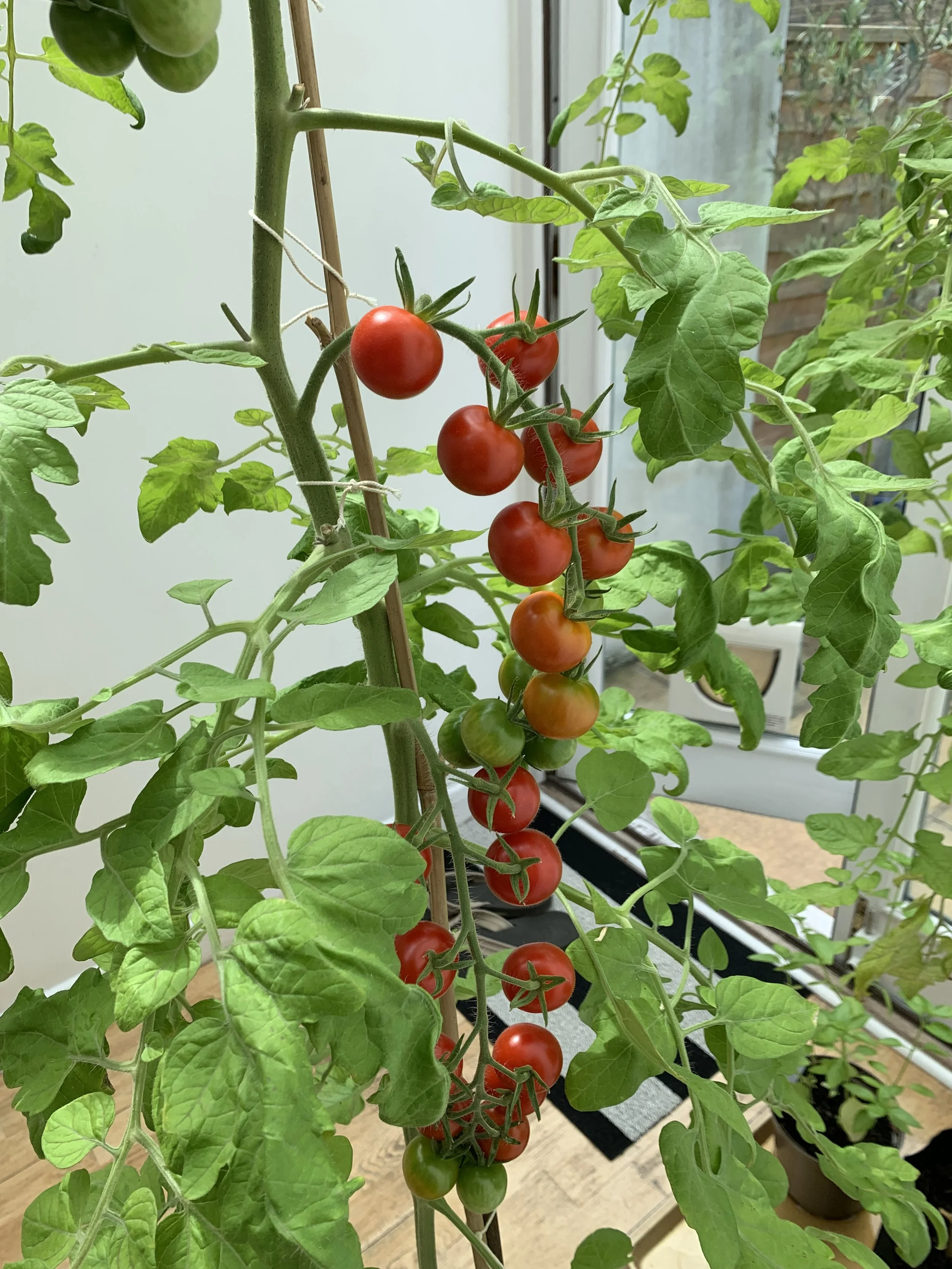How to Take Fuchsia Cuttings
This article has links to products that I may make commission from.
The magic of propagation can breathe new life into your garden, and one of the most popular plants for this task is the vibrant fuchsia. Known for their enchanting teardrop flowers, fuchsias can be grown and nurtured right in your own garden through the process of taking fuchsia cuttings.
In this comprehensive guide, I will take you through the step-by-step process of taking fuchsia cuttings, provide tips on nurturing them to ensure successful growth, and answer the most common questions surrounding this gardening practice.
Let's explore the world of fuchsia propagation together.
To learn more about taking cuttings and propagation, check out my guides:
I love growing my fuchsia in containers.
Why take Fuchsia Cuttings?
When it comes to propagation, fuchsia plants are an exceptional choice for several reasons:
Vibrant Diversity
Fuchsias are renowned for their vibrant colors and diverse varieties. Whether you prefer the classic pink and purple hues or are looking to explore other color combinations, there's a fuchsia for every aesthetic.
Eco-friendly Propagation
The process of taking fuchsia cuttings is a green living practice that can contribute positively to your sustainable gardening efforts.
Instead of buying new plants each season, you can cultivate your own from cuttings, thus reducing your carbon footprint and promoting sustainable horticultural practices.
Non-Invasive Roots
Unlike some other plants, fuchsia roots are not invasive. This means that they will not overtake the surrounding plants or damage structures in your garden.
They are also suitable for container gardening, which allows for easy mobility and control over their growth conditions.
Year-Round Beauty
Fuchsia plants can be overwintered indoors, providing color and freshness throughout the year.
By taking cuttings in different seasons, you can create a continuous cycle of blooming fuchsias in your home or garden.
Resilience and Adaptability
Fuchsias are resilient plants that can adapt to various climates and conditions, making them an ideal choice for both beginner and expert gardeners.
They can thrive both indoors and outdoors, and in regions with mild to temperate climates.
In essence, taking fuchsia cuttings gives you the opportunity to actively engage with your plants and their propagation. It's a cost-effective, rewarding, and environmentally conscious method of expanding your garden's collection.
Whether you're planning a fuchsia hedge or growing a standard fuchsia, propagation via cuttings is the first step on this gardening journey.
Want to learn more about propagation? Check out my guides:
What time of year do you take fuchsia cuttings?
Determining the best time to take cuttings is critical for successful propagation.
In the case of fuchsia plants, timing can significantly influence the rate of growth and the overall health of the new plants.
Optimal Season:
Typically, late winter to early spring is considered the best period to take fuchsia cuttings.
Why is that so? Over the winter, fuchsia plants enter a dormant phase.
As the temperatures start to rise in late winter and early spring, the plants awaken from dormancy and begin to grow actively again. By taking cuttings at this time, you harness the plant's natural energy and growth spurts, which can aid in successful rooting and robust growth.
Taking Cuttings in Summer:
The question often arises: Can you take fuchsia cuttings in summer?
While it's possible, it may be more challenging due to higher temperatures and lower humidity, conditions that may cause the cuttings to dry out faster.
If you choose to take cuttings in summer, it's crucial to provide a well-regulated, humid environment, like a covered pot or propagator, to prevent dehydration and facilitate root growth.
Check out my full guide on choosing the best electric propagators.
Off-Season Cuttings:
If you're growing fuchsias indoors or in a greenhouse, you have a bit more flexibility regarding when to take cuttings. Indoor growing conditions are more controllable, so with proper care, you can propagate cuttings virtually any time of the year.
In conclusion, while you can technically take fuchsia cuttings at any time of year, doing so during late winter to early spring typically yields the best results. However, it's important to always consider the specific growing conditions and adapt your gardening practices accordingly.
How to take a fuchsia cutting
Propagating fuchsias from cuttings is a simple and rewarding process.
Here's a detailed, step-by-step guide on how to propagate fuchsias from cuttings:
1. Selecting the Right Cutting
Start by choosing a healthy fuchsia plant.
Look for a soft, semi-ripe stem that is about 5-10cm long.
This stem should ideally have at least two pairs of leaves.
Using a sharp knife or pair of pruning shears, cut the stem just below a leaf joint or node.
These pruning shears are perfect for the job:
2. Preparing the Cutting
Once you have your cutting, it's time to prepare it for planting. Remove the lower leaves to reduce moisture loss and avoid rot when it's planted.
Next, make a clean cut just below a leaf node, as this is the area where new roots are most likely to develop.
To enhance the rooting process, dip the cut end into a rooting hormone. This step is optional but can increase the chances of successful root development.
Here is my recommended rooting hormone:
3. Preparing the Growing Medium
A well-draining growing medium is essential for rooting fuchsia cuttings.
A mixture of equal parts potting soil and compost is a good option.
Fill a pot with this mix, making sure it's well-draining to prevent waterlogging.
Moisten the soil lightly before planting.
Here is my recommended soil mix for rooting plant cuttings:
4. Planting the Cutting
Make a hole in the soil with a pencil or small stick and insert the cutting.
The hole should be deep enough so that the part of the stem with the removed leaves is buried.
Firm the soil around the cutting to ensure it stands upright.
5. Creating the Right Environment
Fuchsia cuttings need a humid environment to develop roots.
To create this, place a clear plastic bag over the pot, ensuring it doesn't touch the leaves of the cutting.
Alternatively, you can use a plastic bottle cut in half or a propagator.
This will create a mini greenhouse effect, maintaining moisture levels and promoting rooting.
Here is my recommended plant propagator to use for fuchsia cuttings:
6. Positioning the Cutting Correctly
Place the pot in a warm, bright location, but out of direct sunlight, as this could cause the cutting to overheat or dry out.
A north-facing windowsill can often provide ideal conditions.
After about three weeks, you can expect the cutting to start showing signs of rooting. You can gently tug the cutting to feel for resistance, which indicates root growth.
Different cuttings root at different rates, so don't be discouraged if you don't see progress immediately.
With proper care and attention, your fuchsia cuttings should develop into beautiful, healthy plants.
Equip your urban green space with my recommend top tier tools.
Can You Root Fuchsia Cuttings in Water?
Yes, it is possible to root fuchsia cuttings in water, and many gardeners find this method particularly straightforward.
The clear water allows you to watch the progress of the roots as they grow, which can be satisfying.
Here's how you can propagate fuchsia cuttings in water:
1. Taking the Cutting
As with the soil method, select a healthy stem of about 5-10cm long with at least two pairs of leaves.
Using a sharp knife or pruning shears, cut just below a leaf joint or node.
2. Preparing the Cutting
Remove the lower leaves to minimize moisture loss through transpiration.
This also prevents the leaves from being submerged and potentially rotting in the water.
3. Placing the Cutting in Water
Fill a clear glass or jar with water, and place the prepared cutting in it.
Only the part of the stem where you removed the leaves should be submerged in the water. You can use cling film and a rubber band to create a cover for the glass, poking a hole through for the cutting.
This helps maintain high humidity around the leaves, mimicking the plastic bag method used in soil propagation.
4. Choosing the Right Location
Position the glass in a warm, well-lit location out of direct sunlight.
Too much heat can encourage algae growth in the water or cause the cutting to dry out.
5. Monitoring and Changing the Water
Refresh the water every few days or if it starts to look cloudy.
This prevents bacteria build-up and ensures a fresh supply of oxygen for the cutting.
6. Checking for Root Development
After about three weeks, you should start seeing root development.
Once the roots are approximately an inch long, you can transplant the cutting to a pot with a well-draining potting mix.
Remember that while rooting fuchsia cuttings in water can be a fun and educational method, it can also be somewhat riskier.
Cuttings can rot more easily in water than in soil if the water isn't changed regularly, and the transition from water to soil can sometimes shock the plant. However, with careful handling and proper care, water propagation can be successful.
Want to learn more about propagation? Check out my guide: How to Propagate Rhododendrons Successfully.
How to Overwinter Fuchsia Cuttings
Fuchsias are not frost-hardy and need special care during the colder months.
Here's how to over winter your fuchsia cuttings and ensure they survive to bloom another year:
Move to a Protected Space
If your fuchsia cuttings are in pots, the easiest thing to do is to move them to a protected space before the first frost.
This could be a greenhouse, a conservatory, a frost-free shed, or even indoors. If moved indoors, they should be placed in a well-lit location but out of direct sunlight.
Reduce Watering
During the winter months, fuchsias enter a dormant phase and their water requirements reduce.
Overwatering at this stage can lead to root rot. Water sparingly, just enough to keep the compost from completely drying out.
Pruning
Pruning isn't essential before overwintering fuchsias but it can help to conserve energy and make the plant more manageable.
Cut back the stems to about half their length or to the rim of the pot.
Protect Outdoor Fuchsias
If your fuchsias are planted in the ground and can't be moved, there are still steps you can take to protect them.
Apply a thick layer of mulch around the base of the plant, which will help to insulate the roots. Check out my guide: The Best Alternatives to Traditional Mulch.
Alternatively, you can wrap the whole plant in fleece.
Pest and Disease Check
Inspect your fuchsias regularly over the winter months for signs of pests or disease.
The warm, enclosed conditions can sometimes encourage problems like aphids or grey mold. Prompt treatment will prevent these issues from getting out of hand.
Gradually Acclimate in Spring
When spring arrives and temperatures start to rise, gradually acclimate your fuchsias back to outdoor conditions.
This should be done over a couple of weeks to avoid shocking the plants. Start by moving them to a sheltered spot for a few hours each day, gradually increasing the time they spend outside.
There's an undeniable beauty in watching a cutting or seed evolve into a flourishing, vibrant fuchsia plant.
Whether you're propagating from cuttings or seeds, rooting them in water or soil, or even growing a standard fuchsia or a fuchsia hedge, you're partaking in the lifecycle of these gorgeous plants and adding diversity and beauty to your garden.
The journey to successful fuchsia propagation does not end at taking cuttings. Overwintering fuchsias and ensuring their survival through colder seasons, repotting, and even training fuchsias into hedges or standards are all part of the rewarding process.
The practice of propagation brings you closer to the rhythm of nature. It allows you to delve deeper into green living and, at the same time, expand your garden's assortment of stunning blooms. After all, the most significant advantage of taking fuchsia cuttings or sowing fuchsia seeds is the wealth of new plants that you can nurture and watch grow.
